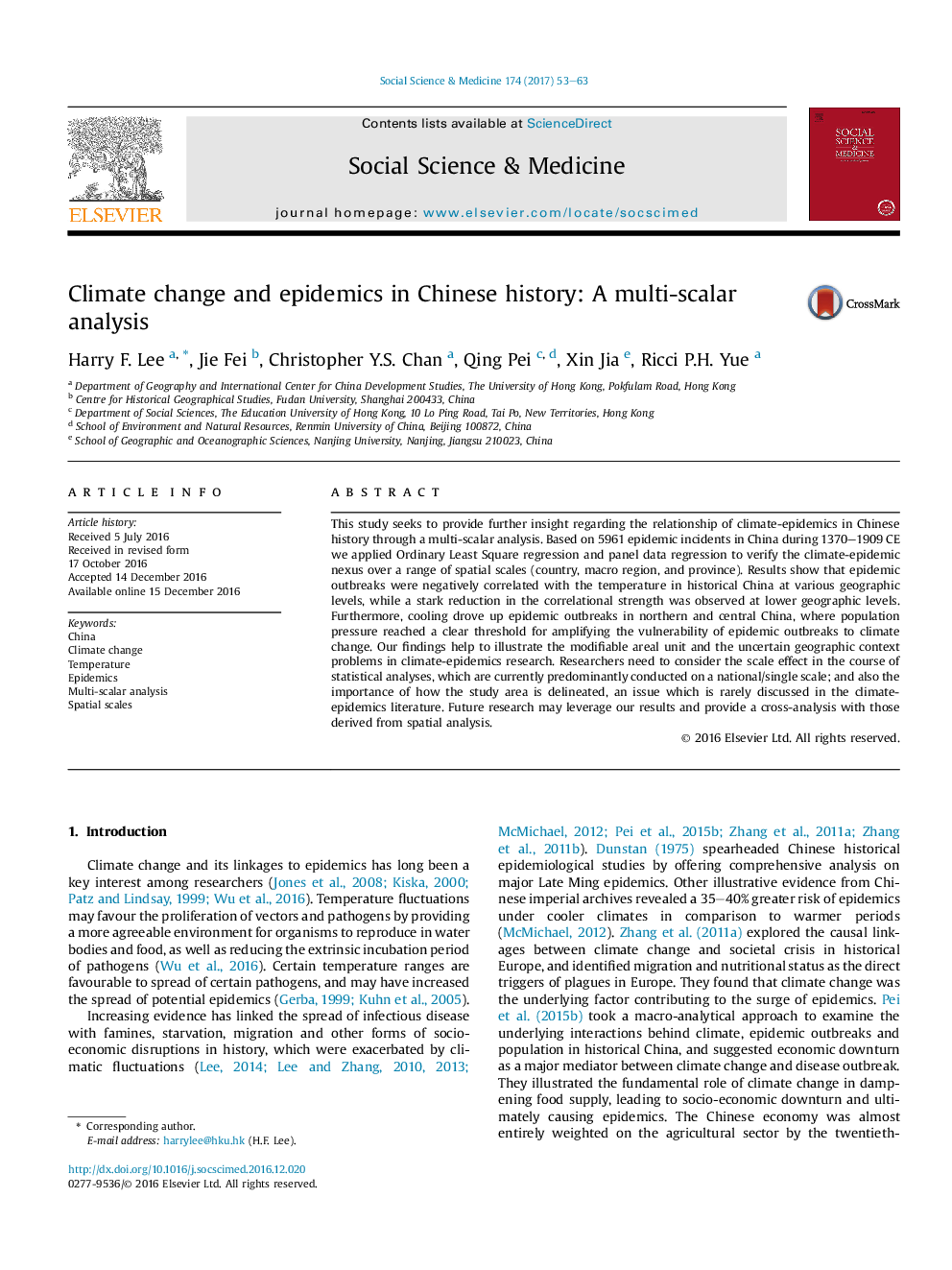| Article ID | Journal | Published Year | Pages | File Type |
|---|---|---|---|---|
| 5046811 | Social Science & Medicine | 2017 | 11 Pages |
â¢Multi-scalar analysis based on 5961 epidemic incidents in Chinese history.â¢Epidemic outbreaks were negatively correlated with temperature.â¢Stark reduction in the correlational strength observed at lower geographic levels.â¢Cooling primarily drove up epidemic outbreaks in northern and central China.â¢Shows impact of modifiable areal unit and uncertain geographic context problems.
This study seeks to provide further insight regarding the relationship of climate-epidemics in Chinese history through a multi-scalar analysis. Based on 5961 epidemic incidents in China during 1370-1909 CE we applied Ordinary Least Square regression and panel data regression to verify the climate-epidemic nexus over a range of spatial scales (country, macro region, and province). Results show that epidemic outbreaks were negatively correlated with the temperature in historical China at various geographic levels, while a stark reduction in the correlational strength was observed at lower geographic levels. Furthermore, cooling drove up epidemic outbreaks in northern and central China, where population pressure reached a clear threshold for amplifying the vulnerability of epidemic outbreaks to climate change. Our findings help to illustrate the modifiable areal unit and the uncertain geographic context problems in climate-epidemics research. Researchers need to consider the scale effect in the course of statistical analyses, which are currently predominantly conducted on a national/single scale; and also the importance of how the study area is delineated, an issue which is rarely discussed in the climate-epidemics literature. Future research may leverage our results and provide a cross-analysis with those derived from spatial analysis.
